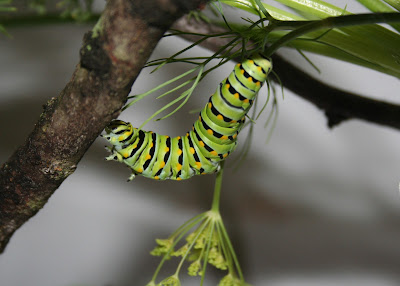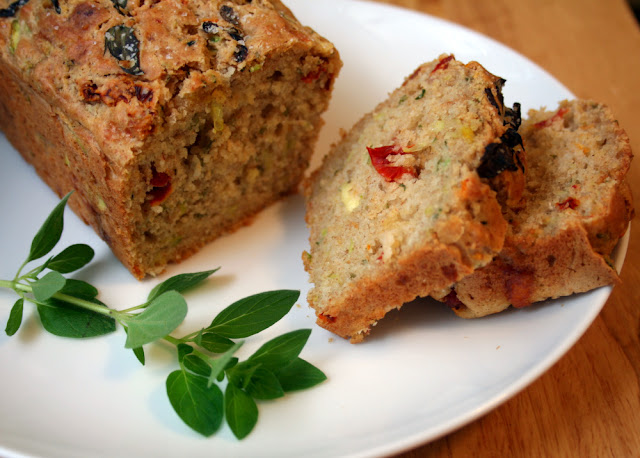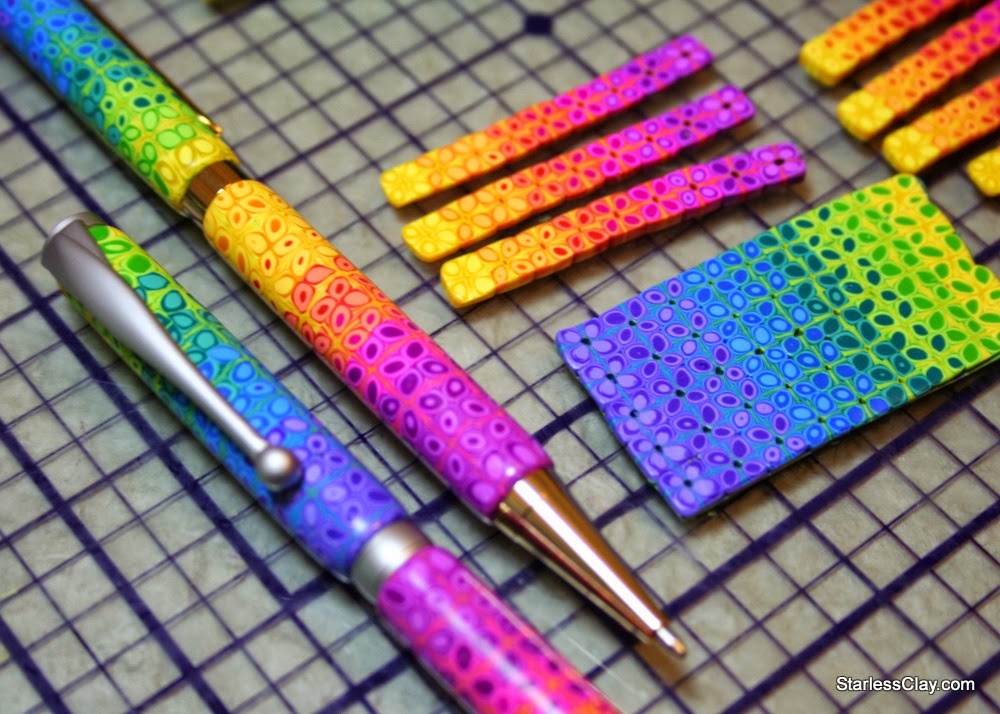I recently received a box of new leaf-shaped cookie cutters. I knew that I wanted to make some autumn ornaments and that I wanted to do something with texture sheets- but what? I turned to my stack of polymer clay books and found a really interesting way to use texture sheets in Lisa Pavelka's
Elegant Gifts in Polymer Clay- the Sutton Slice, attributed to Pete Sutton. Lisa's tutorial involves baking the clay and texture sheet together in your oven. I gave it a try and although the sheet didn't burn, it emitted enough fumes to make me nervous and started to warp after a couple bakings. I decided to try removing the clay from the texture sheet before baking and it worked 90% as well while producing 100% less smell and damage to my texture sheet, so I will present both methods to you.
You Will Need:
Texture sheet
(an abstract design will work best as it will not be so obvious if your design doesn't transfer perfectly)
Pasta machine
Flexible tissue blade
Craft blade
Leaf-shaped cookie cutters
Small circle Kemper punch or drinking straw
Polymer clay in autumn leaf colors
Start by rolling a sheet of clay on the third thickest setting of your pasta machine. This color will form the raised design. Tear off small pieces and, using your fingers, press them firmly into your texture sheet to fill in the recessed areas. Periodically slice off the extra clay sitting on top. A gentle sawing motion while applying very little pressure seemed to work best for me.
The filled-in area just needs to be slightly larger than the cookie cutter(s) you will be using, so set your cutter(s) on the sheet periodically to check your process. No point in doing more work than you have to! Give your sheet a once-over and remove as much extra clay as you can, so the raised areas of the stamp are very clean. It may help to curve your blade.
Roll out a sheet of your base color on around the second thickest setting of your pasta machine and cut out your leaf shapes. Lay them on your texture sheet and, starting in the center, firmly press down to adhere them to the clay underneath. It's okay if the leaf shapes spread as you do this- just make sure they are not distorting in any direction other than "outward". Use a roller to smooth the leaves out if needed.
Press your cookie cutters down into the leaves and "leave" them there (heh). Use a small round punch- or a drinking straw- to cut a hole near the base of each leaf- you don't need to leave the punch in place afterward. Bake the whole mess at your clay's recommended temperature for 10 minutes, with as much ventilation as possible.
When everything has cooled enough to touch but is still flexible, carefully remove the cutters and clay from the texture sheet. If any important parts of the design did not come up with the leaves, unmold them and adhere them in the correct place with liquid polymer clay.
You'll probably end up with some extra bits hanging on to the edges of the leaves. Flip over the cutter and press down to cut all the way through the clay. Remove the leaf and clean up the edges with a craft blade if needed. Re-cut the circle with a twisting, drilling motion so it goes through both colors of clay.
If you'd like to try this
without baking the texture sheet, remove the leaves after adhering them to the patterned clay. Try to hold the clay sheet flat and peel the rubber sheet from the clay, rather than the other way around, to reduce stretching and cracking of your clay. My other hand should be supporting the clay but I was using it to hold the camera.
If any important parts of the design did not come up with the leaves, roll a sheet of your base color on the second thinnest setting and press it onto the missing parts just as you did before. Peel the sheet carefully away and with any luck the missing part will come up with it. If not, you may need to re-mold the piece and try again. When you do successfully remove the piece you need, cut around it with your craft blade and adhere it to the right position on your leaf with liquid polymer clay. Unfortunately I didn't take any pictures of that.
Flip your leaves over and use the cookie cutters again to cut everything to the right shape. Cut holes near the bases with your Kemper punch or straw.
Both methods: Bake according to your clay brand's instructions. Lightly sand and seal with Varathane or floor polish. Hang by ribbon or fishing line.
Notes:
I used Lisa Pavelka's
"Flow" paisley texture sheet
I used the 3.5" oak leaf, 3.5" pin oak leaf, and two pieces of the 5 piece maple leaf set from
The Cookie Cutter Shop
I used Premo in the following colors:
1 part Gold, 1 part Green
Gold
1 part Gold 1 Part Bronze
Bronze
...and the brown was a mishmash of metallic scraps, but it's pretty close to 1 part Bronze, 1 part Blue Pearl, 2 parts Gold, 4 parts Black






































